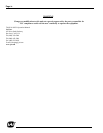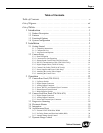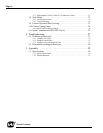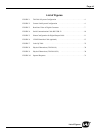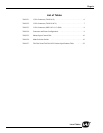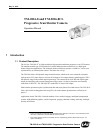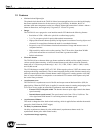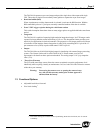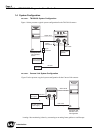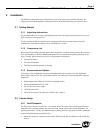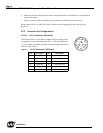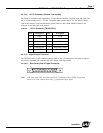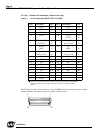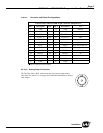
Page 2
TM-2016-8 and TM-2016-8CL Progressive Scan Shutter Camera
Introduction
1.2 Features
• Miniaturized and lightweight
The printed circuit boards in the TM-2016-8 have been arranged based on a new design philosophy
that creates modular electronics for the camera, giving it flexibility. In addition, the use of
miniature solid-state components results in a compact, lightweight camera that is 44mm x 44mm x
64mm in dimensions, and weighs only 136 grams (CL version 141 grams).
• Imager
The TM-2016-8 uses a progressive scan interline transfer CCD that has the following features:
- Resolution of 1920 x 1080 active pixels for excellent image quality.
- 7.4 x 7.4 µm square pixels for precise dimensional measurement.
- High-speed electronic shutter capability for high dynamic resolution of moving objects and
electronic iris control that eliminates the need for a mechanical shutter.
- Progressive scan CCD eliminates interlace deterioration of image and increases ease of
computer interface.
- High sensitivity and low noise at fast scanning. The CCD can drive faster than 20 MHz
pixel clock rate and has an excellent S/N ratio that is greater than 60dB.
- Built-in microlenses.
• Electronic shutter
The TM-2016-8 has a substrate drain-type shutter mechanism which provides superb pictures at
various speeds without smearing. A built-in manual shutter speed control selects the electronic
shutter rate of 1/30 (non-async mode only), 1/60, 1/125, 1/280, 1/500, 1/1,000, 1/2,000, 1/4,000,
and 1/8,000 second.
The CCD discharges at a high VINIT of 5V DC. With a negative pulse to VINIT, the camera resets
and purges the charge momentarily. Then it starts integrating for the period of shutter control set by
either an external pulse width or internal shutter control. Progressive scanning permits a full 1080
lines of vertical resolution, as compared to a conventional CCD camera which captures only half
the vertical lines per shutter.
• Asynchronous reset
The TM-2016-8’s asynchronous reset is flexible and accepts external horizontal drive (HD) for
phase locking. When the VINIT pulse is applied, it resets the camera's scanning and purging of the
CCD. There are two modes to control the asynchronous reset and shutter speed:
- External VINIT with pulse width. The duration between pulse edges controls the shutter
speed externally.
- Internal shutter speed control. The speed control varies from 1/30 to 1/8,000 sec. The
video signal starts with internal V reset timing related to shutter speed.
• Asynchronous 0 Shutter
This mode is changed to allow back-to-back strobing, which is applied before and after the transfer
gate pulse (10th H from the VINIT trigger)
• No-Delay Asynchronous Shutter
No-delay asynchronous shutter for pulse-width control (asynchronous shutter mode 9 or
asynchronous shutter pulse width control mode)
• Asynchronous image capturing



